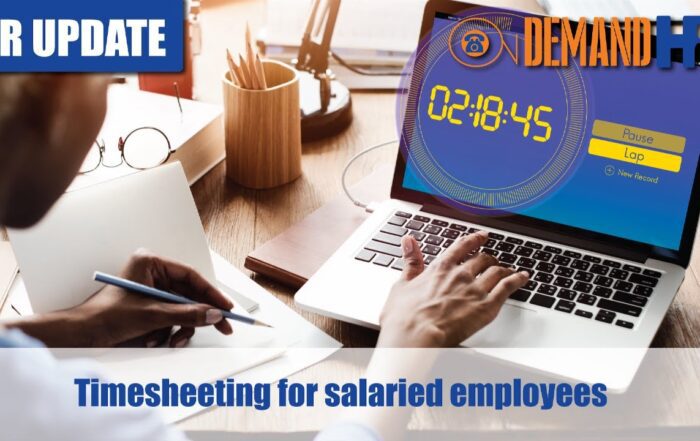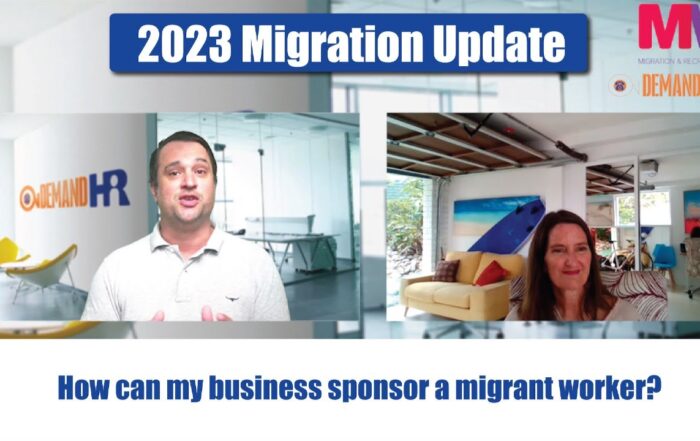Are your workplace policies & procedures still relevant to your business?
One of the important steps of the WR Review process is to create or revise the policies & procedures manual for the client. Often we are told that they already have a comprehensive manual in place, why is it so important to review these or even have them in the first place? To seek the answer to this question, we sat down with On Demand HR Senior WR consultant Jason Norrie to hear his thoughts and suggestions.
Please see below for a full transcript of this video
Share the HR or workplace relations challenge facing your business and one of our experienced consultants will be in touch within 24 hours with a strategic action plan or discover the best strategy yourself by accessing out free online training library.
Transcript
00:00:00:02 – 00:00:05:17
Our workplace relations review is a lot more than just, I guess, award coverage
00:00:05:17 – 00:00:09:29
and pay rates and, you know, contractors, employees, all these sorts of things.
00:00:10:14 – 00:00:14:13
The other part of our essential part of our Workplace Relations
00:00:14:13 – 00:00:18:01
review is to create or revise policies and procedures,
00:00:18:19 – 00:00:21:04
documentation for clients.
00:00:21:04 – 00:00:26:22
And often we’re told that they may already have a comprehensive manual in place.
00:00:27:01 – 00:00:31:15
So in your view, why is it so important to review these
00:00:31:15 – 00:00:35:10
or even to have these types of documents in place in the first place?
00:00:36:04 – 00:00:40:12
Well, some people think that policies and procedures
00:00:40:12 – 00:00:43:26
are set and forget or rainy day sort of procedures.
00:00:45:10 – 00:00:49:29
What you want to do is have a good set of policies and procedures
00:00:49:29 – 00:00:53:18
in the business that guide the employee on how to be a good employee.
00:00:54:06 – 00:00:55:11
That is basically what it is.
00:00:55:11 – 00:00:59:08
What are the good ways in which a employee
00:00:59:08 – 00:01:03:18
would conciliate with the business to seek their entitlements?
00:01:03:18 – 00:01:05:00
How do they apply for annual leave?
00:01:06:01 – 00:01:08:05
What is good, performance what is poor performance,
00:01:08:05 – 00:01:11:23
or what is misconduct in these policies?
00:01:13:07 – 00:01:15:10
A business that carries
00:01:15:28 – 00:01:19:07
too many policies or complex policies
00:01:20:01 – 00:01:23:11
Policies that look like scientifically drafted documents
00:01:24:27 – 00:01:27:28
could become too complex to operate with
00:01:29:04 – 00:01:31:04
policies that become very rigid
00:01:31:04 – 00:01:34:00
and say that you’ve got to go through multiple steps in order.
00:01:34:20 – 00:01:36:28
Multiple forms of documents have got to be filled in.
00:01:37:17 – 00:01:40:28
Could make it too strenuous for business to go through certain processes
00:01:41:06 – 00:01:44:05
when a a policy that’s
00:01:44:09 – 00:01:48:15
drafted to the needs of the business to sort of the environmental
00:01:48:15 – 00:01:51:28
the climate that you work in could be a lot more easy to operate.
00:01:53:07 – 00:01:55:16
Traditionally, people think that it’s three strikes,
00:01:55:16 – 00:01:59:10
you’re out type of a disciplinary conduct sort of piece.
00:01:59:10 – 00:02:03:13
So if your policy says that you have verbal warnings, first warning, second
00:02:03:15 – 00:02:07:22
and third and final warnings and things like that, you could be potentially
00:02:07:22 – 00:02:11:01
keeping your employee a lot longer than you necessarily have to.
00:02:11:14 – 00:02:14:25
What we look at when we draft policies for
00:02:14:25 – 00:02:17:15
the business is getting to know
00:02:18:02 – 00:02:22:11
what is a business’s working style with how they relate to their employees.
00:02:22:25 – 00:02:25:00
What are some common trends that have been in the business
00:02:25:00 – 00:02:28:07
previously about how they conciliate on certain matters?
00:02:28:16 – 00:02:31:25
And I sort of pick apart the the employer’s
00:02:33:01 – 00:02:33:28
processes
00:02:33:28 – 00:02:36:20
to help understand how should that policy be drafted?
00:02:37:01 – 00:02:38:10
Do they need something that’s rigid?
00:02:38:10 – 00:02:40:11
Do they need something
00:02:40:16 – 00:02:42:12
that’s got flexibility in it?
00:02:42:12 – 00:02:43:24
Do they need
00:02:44:10 – 00:02:46:18
certain policies that other businesses wouldn’t carry
00:02:47:13 – 00:02:53:07
because of the diversity of their employees?
00:02:53:13 – 00:02:56:27
A couple of policies I’ve used recently are cultural
00:02:57:11 – 00:02:59:27
leave for some of our clients
00:03:01:07 – 00:03:03:18
with the original Australian
00:03:03:18 – 00:03:06:19
workforce working for them.
00:03:06:29 – 00:03:09:24
They’ve got a lot more types of leave
00:03:09:24 – 00:03:15:10
that would be Sorry, Their family is not necessarily a direct family.
00:03:15:10 – 00:03:16:01
They culture.
00:03:16:01 – 00:03:19:02
The people in their community are their family.
00:03:19:02 – 00:03:23:26
So taking bereavement leave for someone in their family who’s
00:03:23:26 – 00:03:27:07
a respected elder, they would consider that bereavement leave,
00:03:27:07 – 00:03:31:05
but we would consider that as annual leave the Fair Work Act.
00:03:31:11 – 00:03:36:20
So it’s about ensuring that the policies are shaped to include the workforce,
00:03:37:00 – 00:03:40:05
that they’re to be relevant
00:03:40:05 – 00:03:43:16
to the times and can help a business
00:03:44:23 – 00:03:47:15
manage through that process.
00:03:47:15 – 00:03:50:22
We’ve checked off all the obligations under the Fair Work Act.
00:03:51:12 – 00:03:54:21
or WHS Act whatever it may be.
00:03:54:21 – 00:03:56:23
I think my summary
00:03:57:13 – 00:04:00:27
of what I understand of what you’ve just covered is policies
00:04:00:27 – 00:04:04:27
and procedures are in an enablement document
00:04:05:03 – 00:04:09:02
to be able to enable the business to carry out their business
00:04:09:02 – 00:04:10:25
in the way that they want.
00:04:10:25 – 00:04:15:01
But one of the one of the things that we need to be conscious of is
00:04:15:01 – 00:04:19:13
we don’t want the policies and procedures to be restrictive
00:04:19:15 – 00:04:23:04
of the business, to carry out the business in the way that they want.
00:04:23:23 – 00:04:27:06
And anything that’s additional that we’re providing
00:04:28:17 – 00:04:30:19
to our employees
00:04:30:19 – 00:04:34:07
that we’re not obligated to potentially can be included
00:04:35:02 – 00:04:37:16
in the policies and procedures document,
00:04:37:21 – 00:04:40:25
such as the bereavement leave that you mentioned.
00:04:41:25 – 00:04:42:15
And one
00:04:42:15 – 00:04:48:18
of the reasons why we aim to do this in a policies and procedures manual
00:04:48:18 – 00:04:53:19
as opposed to an employment contract, is, again, a policies and procedures
00:04:53:22 – 00:04:58:07
manual can be amended by the business without mutual agreement by the employee.
00:04:58:23 – 00:05:02:15
So again, it’s about maintaining that flexibility to carry out
00:05:02:15 – 00:05:07:11
the business operation in a way that is not restrictive.
00:05:07:25 – 00:05:10:22
And creating those additional obligations
00:05:12:09 – 00:05:15:07
such as the three strike policy that you mentioned,
00:05:16:02 – 00:05:19:02
makes it very challenging when it comes to things like performance management.
00:05:19:04 – 00:05:22:07
So it’s important to get these things right.
00:05:22:07 – 00:05:26:24
And that’s why we’ve included as part of our workplace relations review.






